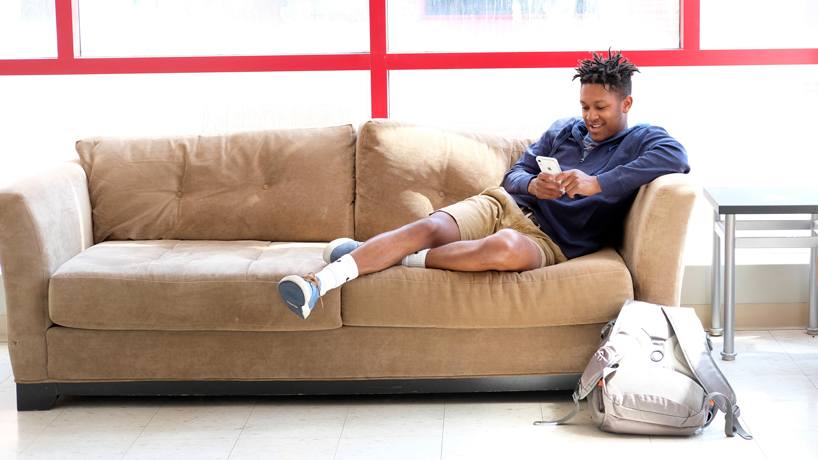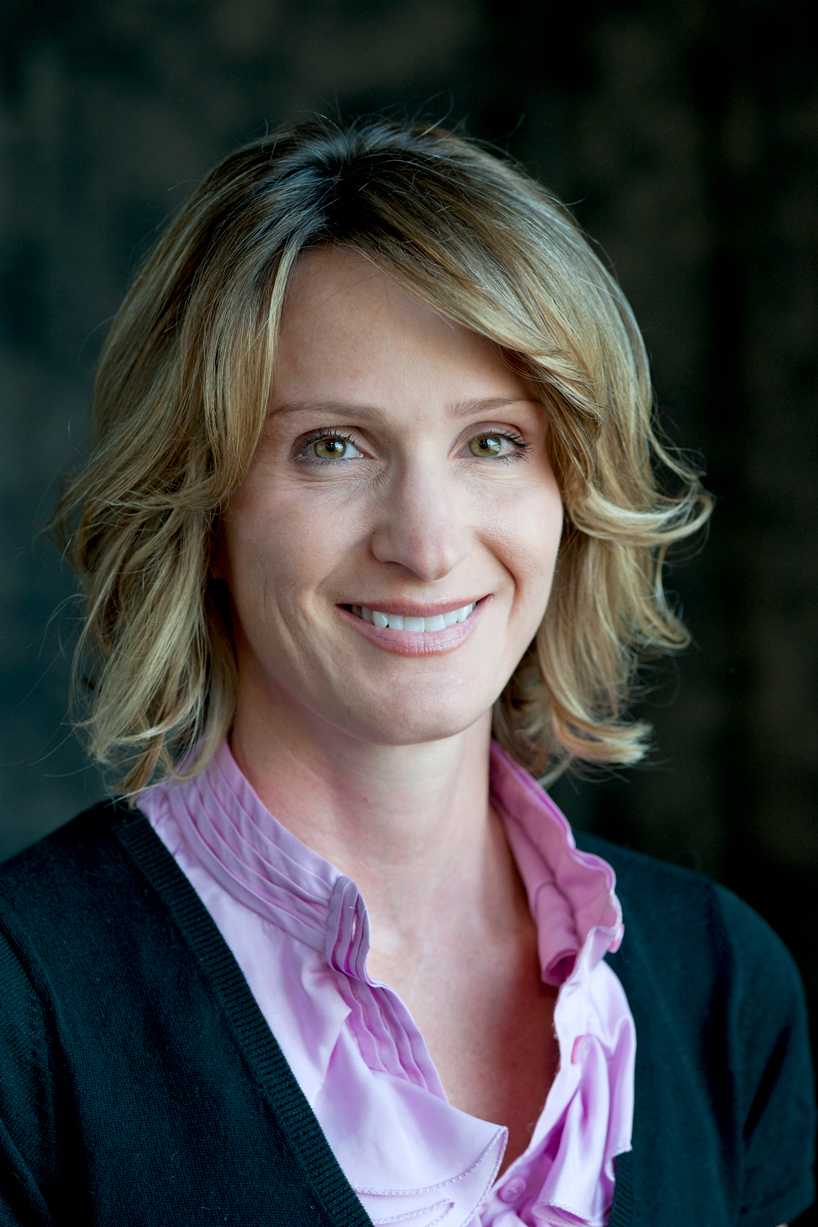
Technology, including smartphones, provides a number of tools to help people maintain social connections during the COVID-19 pandemic, and Associate Professor Kamila White stresses the importance of doing so. (Photos by August Jennewein)
From public playgrounds and restaurant dining rooms to church sanctuaries and arenas, many of the places Americans typically gather to socialize with friends and loved ones have been kept empty while the country tries to get control of the COVID-19 pandemic.
Many people are now working remotely from home and foregoing visits to friends’ houses while public directives prevent gathering in groups larger than 10 people.
UMSL Daily spoke to Kamila White, an associate professor of clinical psychology at the University of Missouri–St. Louis, about the need for people to find ways for socialization while still adhering to public health guidelines aimed at slowing the spread of the novel coronavirus.
What should people be mindful of as they try to ensure good mental health while social distancing?
I think people using “social distancing” is a really tricky term. It is perhaps more accurate for people use the term physical distancing. People need to maintain their social connections, while staying physically distant from others. People benefit from being socially connected if they can be. A lot of estimates say that about 75 percent of our country is extroverted. That makes this sort of physical distancing from each other even harder when so many people are driven and energized by social engagement. Social connections and social support is a big determinant of our health – both physical and mental health. Having social connections with each other helps us stay well. It helps us have a strong quality of life. There are studies that show that it helps us live longer, healthier lives.
What are some ways people can get connected while physically apart?
Making a plan to take care of each other, talk with each other, connect with family and close friends, check on each other socially through telephone connections, and maintaining social connectedness is important now more than ever. Some ways to connect are to make a video call to someone, put together a small pick-me-up video, consider putting your loved ones or pets in the video, show and share with loved ones how you are managing to social media,
Personalized connections need to be prioritized. Friends and family can be supportive to you and you can be of direct to service to each other. Service is an antidote to fear, in my opinion. It’s a way that we can step away from thinking about ourselves and turn our fear or worry into love and caring, you can be of help to them. You can serve them by social support, social connectedness, modeling effective coping, and even service if they need assistance if they need help.
When you have loved ones that are at a higher risk or vulnerability – and it appears that with this virus, some members of the community, especially our older members and those with medical comorbidy – reach out and support them and let them know we are here for them.
Social media has a heavy presence in a lot of people’s lives, and that can be positive for connecting with people via technology. What are the downsides?
We’re advising people to make a plan for their social media consumption. With a lot of apps like Facebook and Twitter, some people allow the media to drive their consumption, and when you allow that to happen you are letting the media manage you by allowing the media to choose the content. You may be at risk of becoming more afraid or more lonely because of what might be fed to you or by engaging in social comparison. Loneliness in a time of crisis – when we are more isolated and the fears that come from that – can be difficult for people. I encourage people to selectively choose their social media outlets, set limits for the amount of time that they spend consuming versus contributing to social content and also make a daily plan to be of service to others.
What should people do to protect against anxiety, not only for themselves, but for loved ones?
One of the most important things is for people to establish a routine and put your top two or three self-care habits into daily practice.
This is a time with an especially high level of worry and uncertainty – about jobs, finances, health and about how long this will last. It important for us to not judge ourselves for worrying more than usual but to also stay engaged and active about keeping ourselves and each other healthy and safe. If you or a loved one has an anxiety or depressive disorder, it is important to remember your symptoms may wax and wane but this uncertainty is normal. One of the factors helping people mitigate and decrease their level of risk for elevated anxiety and depression is social connectedness. There are some people that are more or less at risk, but maintaining socially close relationships and sharing resources with others can play a crucial role in protecting people. If they know someone who has had suicidal thoughts or behaviors or may be prone to depression or anxiety, reach out to them socially. Another important protective factor for anxiety and depression is physical activity. A daily practice of physical activity – walking, running, yoga, or an online exercise program – can help people cope with the worry and uncertainty at this time.
How are UMSL clinics supporting people during this time?
The UMSL psychology clinics are still open and offering services to our community. We treat adults and children across the spectrum of age and development in the Community Psychological Service, the Center for Trauma Recovery and the Children’s Advocacy Center. Like most places across the country, our faculty and clinics have responded to the need with their expertise to offer telehealth services. We provide video therapy through the internet or, if people don’t have access to the internet, also telephone to offer secure, protected services.
We have continued ongoing therapy, and we offer assessment and treatment to new cases that present for services as needed. All of our clinics offer evidence-based therapy and treatment for any range of emotional or psychiatric problems. And especially during this difficult time, we do believe we can continue to form strong, healthy relationships with our patients and continue doing our work, just in a different format.















